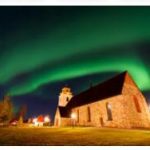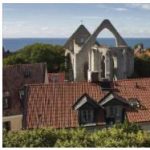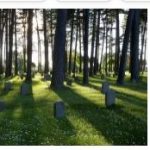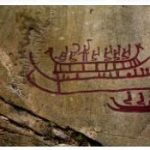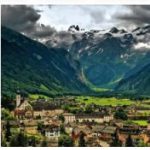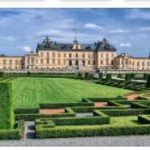The villages on the island of Björkö in Lake Mälaren were important trading centers for the Vikings in the Middle Ages. Their economic relations extended to the Rhine, the British Isles, Byzantium and Persia.
Viking settlements of Birka and Hovgården: facts
| Official title: | Viking settlements of Birka and Hovgården |
| Cultural monument: | “Cradle of Sweden” and with an estimated 3,000 burial mounds, it is the largest archaeological site in early Swedish history |
| Continent: | Europe |
| Country: | Sweden |
| Location: | Björkö (Birka) and Adelsö (Hovgården) islands in Lake Mälaren near Stockholm |
| Appointment: | 1993 |
| Meaning: | archaeological sites from the 9th and 10th centuries as evidence of the European trade of the Vikings |
Viking settlements Birka and Hovgården: history
| around 800 | Foundation of Birka as the most important trading center for the Vikings |
| around 830 | Missionary work by St. Ansgar in Birka |
| 980 | Birka’s job |
| 1279 | royal council meeting in Hovgården and introduction of the feudal system |
| 1872 | Coin discovery in the urban area of Birka, coins – with one exception – of Arab origin from the period 718-977 |
| 1917 | archaeological research on Adelsö |
| 1990 | archaeological research on Björkö |
The cross and Thor’s hammer as grave goods
Plundered by pirates, exhausted from the march, worried whether he would be welcome even without the rich gifts that he had given the Sveakönig and that were now on the ship of some robber chief: Ansgar, the young Benedictine monk from Franconia, must be in miserable condition. have reached their destination Birka. He was traveling on behalf of Emperor Ludwig the Pious, who wanted to promote the Christianization of the north. At first he had evangelized in the Danish Haithabu and had now moved out to convert the Norsemen of Sweden as well.
He was used to richer splendor from Ludwig’s court, but Birka, the first Viking settlement in the Sveareich, must have impressed him. “In Birka there were many wealthy merchants and an abundance of goods of all kinds, a lot of money and valuables,” wrote his pupil and successor Rimbert when he wrote the “Vita Anskarii” forty years after the first missionary work. During Ansgar’s visit, farmers did not live in Birka as they usually did on the shores of what is now Lake Mälaren, which was then a deep bay in the Baltic Sea. Craftsmen, traders and the king’s soldiers lived here. The king himself lived here, either in Birka or in Hovgården, the fortress on the neighboring island of Adelsö.
Birka was the trading center of the northern Baltic Sea area: jewelry, horn combs, bronze fittings, glass beads and the finest woolen fabrics were made by the residents of Birka. But there was also cloth and glass, silver jewelry and sword blades imported by merchants from the Carolingian Empire, honey and linen, iron and furs from the forests of northern Sweden and even silk from China, amethyst from India and Arabic coins.
Since they were made of wood, hardly anything has been preserved of the houses that housed 700 to 800 people during Birka’s heyday. Apart from Rimbert’s book, there are no written records. But 3,000 Viking graves have been preserved on Birka, and the grave goods provide ample information about life in Sweden’s first city. Excavations have been going on since the 17th century, but the entomologist Hjalmar Stolpe carried out the first systematic research into the remains. A farmer had drawn his attention to the rich amber deposits on the island of Björkö and quickly saw that they were not natural fossils: this was jewelry. And so Stolpe dug up several hundred graves, recorded his finds and did it so well that the work of the botanist from the 1870s.
The fact that men and women had the same type of grave suggests that the Swedes were emancipated as early as the Viking Age. The bodies laid out, with additions to them, were covered with wood and then burned. What was left was put in an urn that was buried. The noblest, on the other hand, were buried unburned in burial chambers, armed with rich gifts for the journey to the afterlife. While women took jewelry, kitchen utensils and leftover food with them to the grave, the men took games and weapons with them to death. Eternal feasts and fights were the order of the day in Walhalla – life after death, really Viking style.
Ansgar, the monk, was welcomed into Birka without any presents. But his sermons did not make a big impression. The followers of the Asa faith successfully defended themselves against Christianization. Crosses can be found among the grave goods, indicating successful conversions or Christian slaves who were deported to the north by the Vikings. But more common are the amulets that show the hammer of Thor or other signs of the gods. Sometimes, of course, the dead were buried with both, a cross and Thor’s hammer. You never know.
According to constructmaterials, the first King of Sweden to be baptized was Olaf, who resided in Sigtuna and no longer in Hovgården. At the end of the 10th century, people had left Birka. Perhaps the fortress excavations, which are far from complete, will one day shed light on why they did it.




